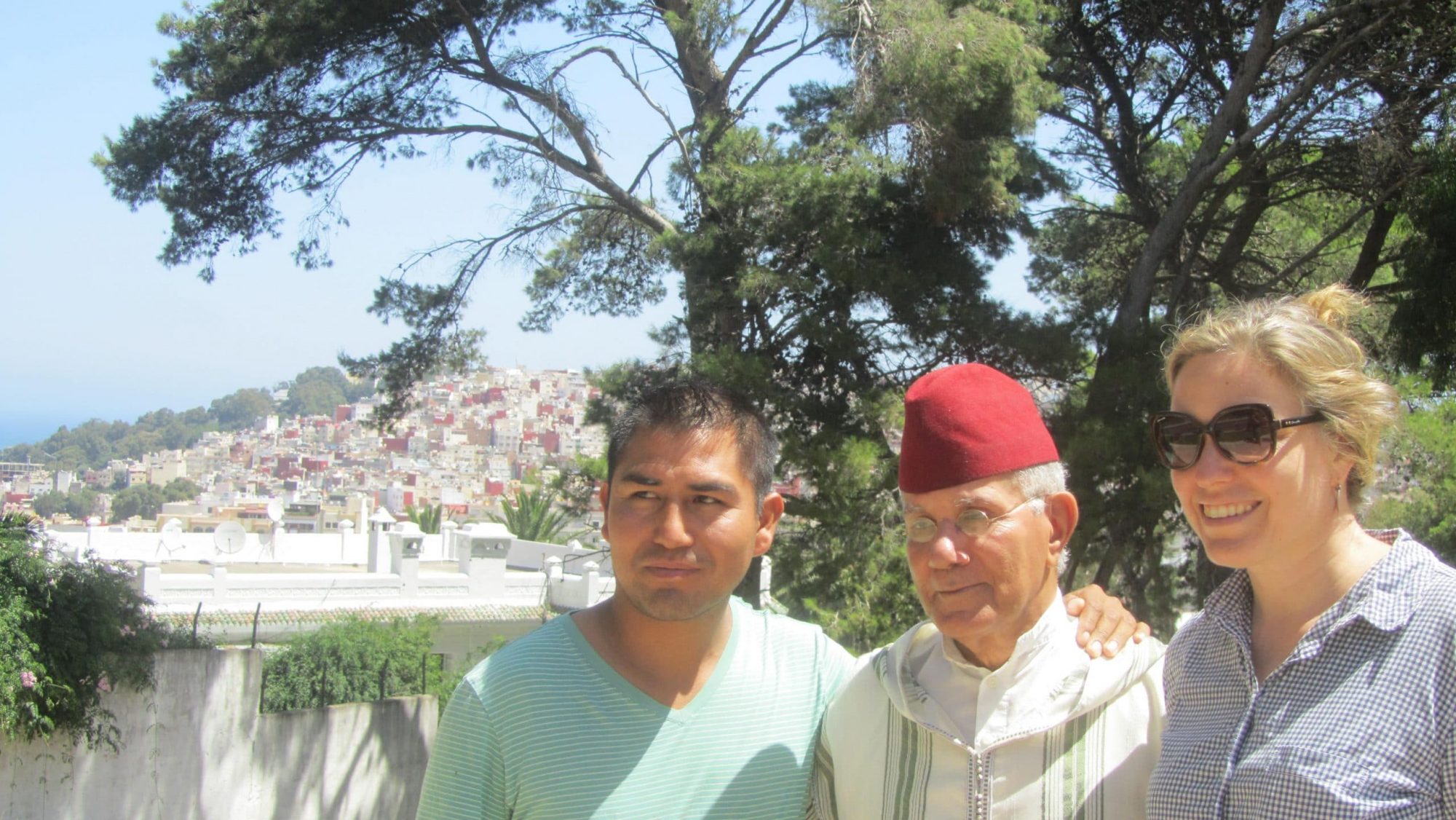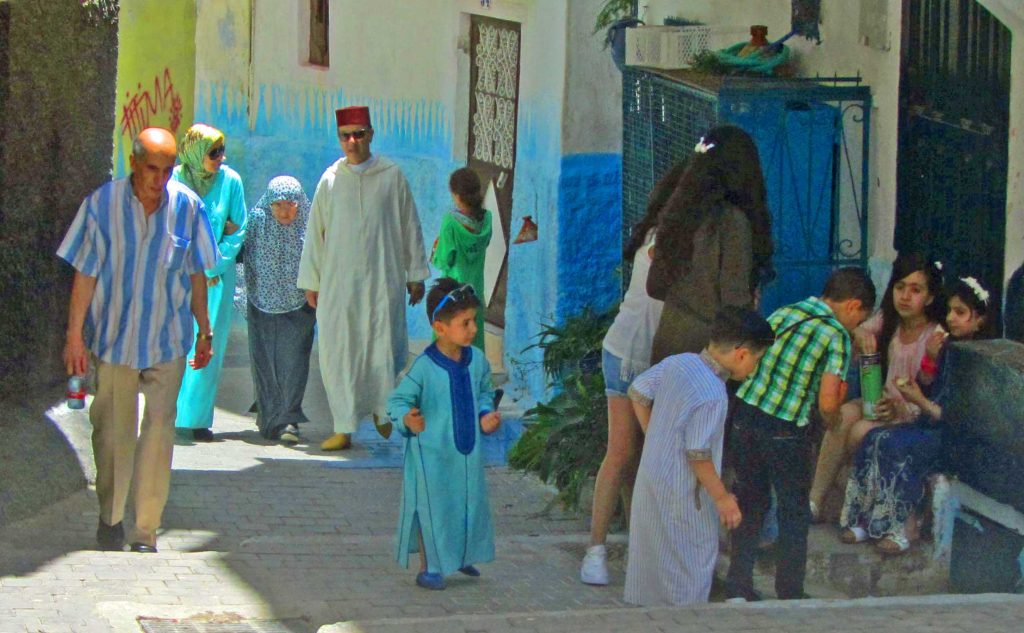
In Tangier, Morocco. June 26, 2017. Joel and Ellen with Ahmed Taoumi, the guide recommended by Rick Steves
Testing big headers using resizable image
Tangier is a city in northwestern Morocco. It is on the Maghreb coast at the western entrance to the Strait of Gibraltar, where the Mediterranean Sea meets the Atlantic Ocean off Cape Spartel. The town is the capital of the Tanger-Tetouan-Al Hoceima region, as well as the Tangier-Assilah prefecture of Morocco.
Many civilisations and cultures have influenced the history of Tangier, starting from before the 10th century BCE. Between the period of being a strategic Berber town and then a Phoenician trading centre to the independence era around the 1950s, Tangier was a nexus for many cultures. In 1923, it was considered as having international status by foreign colonial powers and became a destination for many European and American diplomats, spies, writers and businessmen.
The city is undergoing rapid development and modernisation. Projects include tourism projects along the bay, a modern business district called Tangier City Centre, an airport terminal, and a football stadium. Tangier’s economy is set to benefit greatly from the Tanger-Med port.
We visited Tangier on June 26, 2017. It happened to be Eid, the final day of Ramadan in the Muslim calendar. Eid al-Fitr, also called the “Festival of Breaking the Fast” or Lesser Eid, is a religious holiday celebrated by Muslims worldwide that marks the end of the month-long dawn-to-sunset fasting of Ramadan. This religious Eid is the only day in the month of Shawwal during which Muslims are not permitted to fast. The date for the start of any lunar Hijri month varies based on when the new moon is sighted by local religious authorities, so the day of celebration varies by locality.
Notice the people coming home to feast with relative, all in their dress-up clothes.
